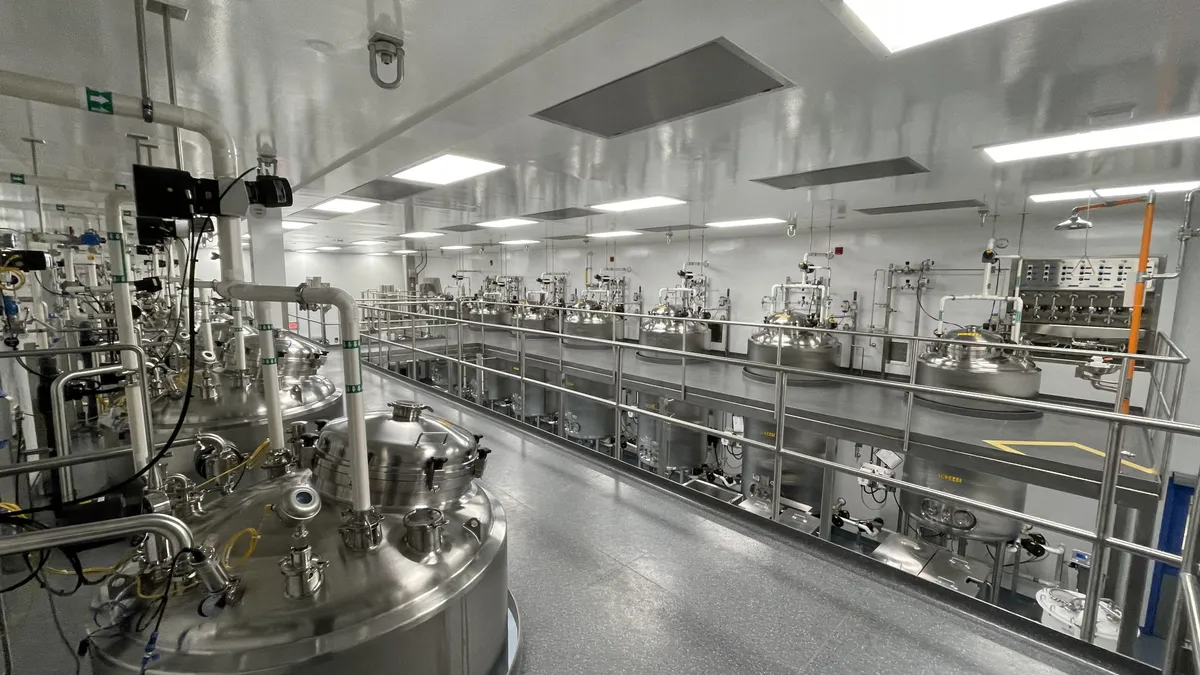An increased emphasis on housing multiple, complex manufacturing processes in the same building is fueling growth in modularization in life science construction, according to a report from life science construction specialist CRB.
The survey from Kansas City, Missouri-based CRB gathered responses from nearly 500 life science industry leaders.
The majority of respondents reported multiple product types in development or in production in the same facility, from monoclonal antibodies to cell therapies to mRNA vaccines. That means nearly all life science companies now develop and manufacture complex, diverse therapy products in a single building, referred to as a "multimodal" approach.
Multimodal facilities allow companies to shift their operations without relocating, which aids in employee retention. Multimodal facilities also provide the stability that many users desire in order to stay in place and focus on their business rather than on real estate.
The report's findings are backed up by the experiences of life science construction pros on the front lines.
For example, Lendlease recently completed Merck’s B880 Flex Formulation Center in Rahway, New Jersey, a multi-product facility designed to support development and clinical supply execution for both human and animal health products, said Anthony Giuliano, general manager of life science construction at Lendlease.
“Over the past few years, pharmaceutical companies and other users of life science space have increasingly sought out facilities that provide flexible operations, and I absolutely expect this trend to continue,” said Giuliano. “The upsurge in companies exploring mRNA therapies following the success of the COVID-19 vaccines illustrates why [product] diversification and the ability to be nimble is so important.”
What a focus on multimodal life science buildings means for contractors
Given this focus on flexible operations, contractors have to build spaces not only for what life science companies require now, but also for what their needs will be in the coming years, said Giuliano. For example, cleanrooms, high-bay labs and other specialty spaces that are unique to life science projects are built differently today than just 10 years ago.
The ability to be nimble and adapt is the biggest challenge for contractors during the construction of a multi-product production line, said Jeff Lundquist, senior director of life sciences at Shawmut Design and Construction. Requirements usually change several times during construction, as the products and manufacturing processes become further defined.
“The construction team has to understand both the product and production process and must work seamlessly with the client and designer to successfully incorporate and document enhancements without impacting any of the project goals,” said Lundquist. “A mindset of collaboration and flexibility has to be ingrained throughout the project team, as the majority of construction will take place before the production process even exists.”
Contractors turn to modular in life sciences projects
About 63% of survey respondents said they were planning to incorporate modularization into future life science projects to enhance flexibility, according to the CRB report. Modularization decreases and defers the burden of making mission-critical design decisions, allowing project teams the opportunity to adapt and scale rapidly, according to the report.
Using a modular approach, project teams can start with a modest buildout that meets immediate business needs and can expand iteratively from there. That includes work such as integrating new equipment, technologies, utility hookups and other operational improvements over time, according to the report.















